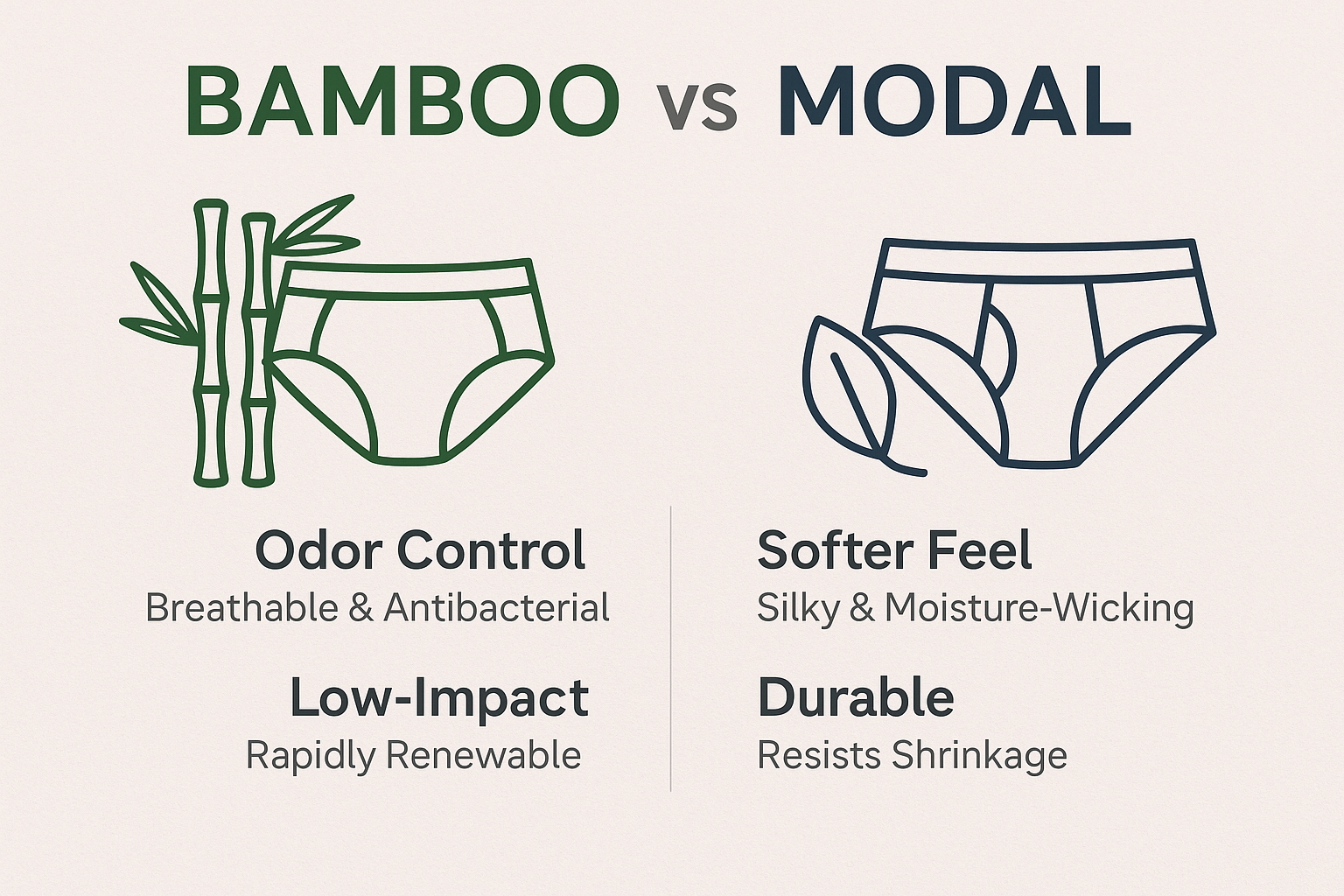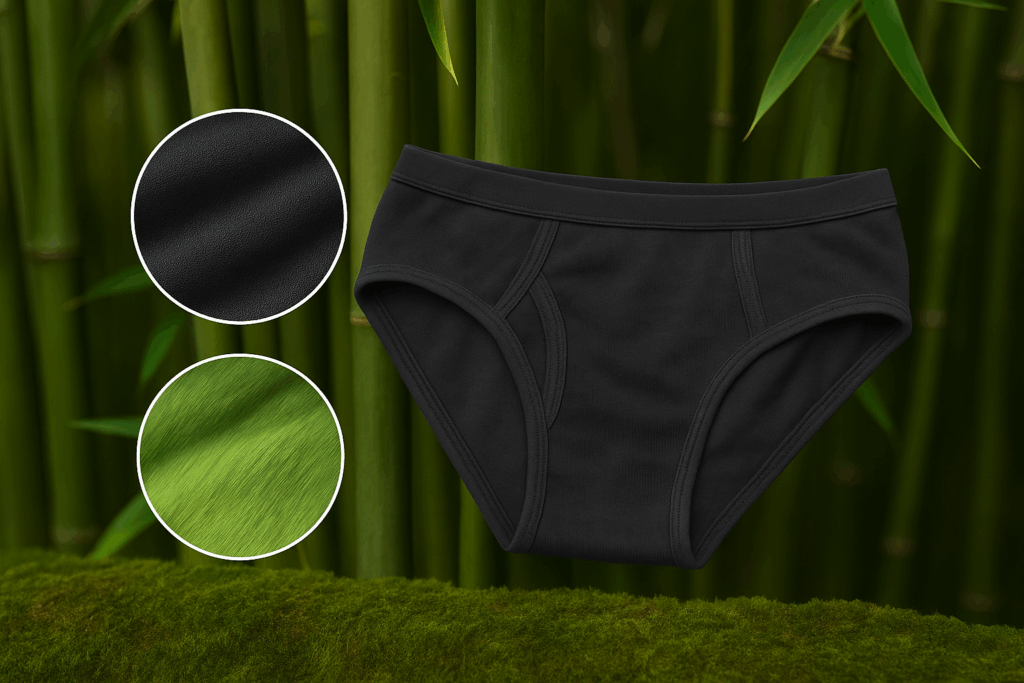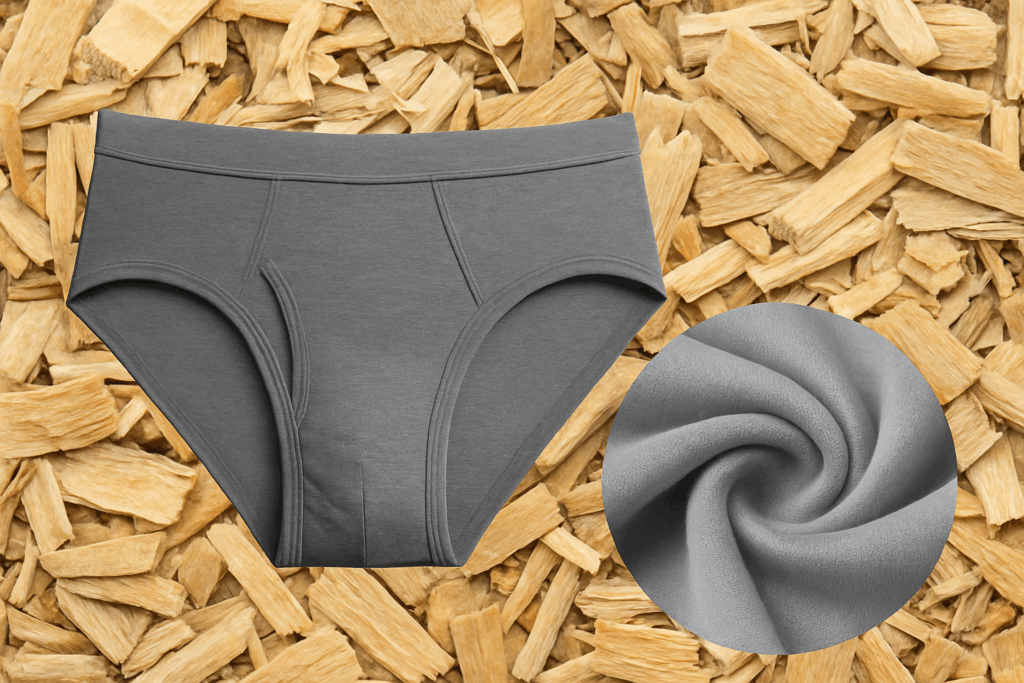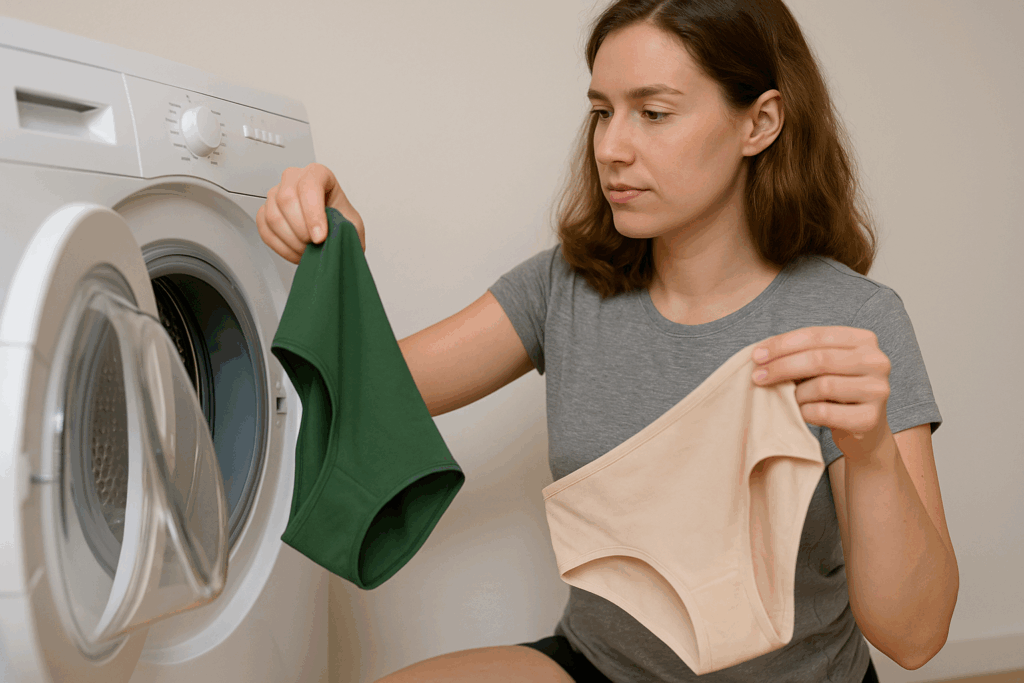Choosing underwear is more than just a style choice; it’s a health and sustainability decision. Bamboo and Modal have emerged as leading fabrics in underwear production, but which one truly reigns supreme? This comprehensive guide dives deep into both fabrics, providing you with clear, credible, and user-friendly insights to make an informed choice.

IQ Snapshot
| Metric | Bamboo Briefs | Modal Briefs |
| Moisture-wicking & Dry-time | 78 | 84 |
| Odour / Bacterial Control | 85 | 78 |
| Long-term Softness (30 wash cycles) | 72 | 90 |
| Tear & Pilling Resistance | 70 | 88 |
| FSC-Certified / Closed-Loop Availability | 73 | 76 |
| Overall IQ (weighted) | 80 | 83 |
Take-home: Go Bamboo if you’re sweat- or odour-prone, go Modal if you want cloud-soft longevity. Both beat commodity cotton on eco metrics when certified.
(IQ = weighted score from lab data, certifications, user sentiment & expert panel. Full rubric → /iq-methodology)
Understanding Bamboo Underwear
Bamboo underwear originates from bamboo grass, a rapidly renewable and eco-friendly plant that uses minimal water and typically requires no pesticides (EPA.gov). The bamboo plant undergoes a pulping and chemical treatment process to produce a silky, breathable fabric ideal for sensitive skin.

Advantages of Bamboo
- Natural Odor Control: Bamboo naturally contains antimicrobial properties, effectively reducing odors caused by bacteria (NIH.gov).
- Breathability: The porous nature of bamboo fibers allows excellent airflow, keeping you comfortable in hot and humid climates.
- Eco-Friendly Farming: Bamboo grows quickly, regenerates on its own, and requires significantly less water than traditional cotton (FSC.org).
- Skin-Friendly: Known for hypoallergenic properties, bamboo minimizes skin irritation and is gentle enough for people with sensitive skin (AAD.org).
- UV Protection: Naturally provides a degree of UV protection, making it suitable for outdoor activities (WHO.int).
Potential Drawbacks
- Chemical Processing: Production can involve harsh chemicals. Opt for brands using closed-loop production processes that minimize environmental impacts (EPA.gov).
- Durability Issues: Bamboo fabric may pill or lose some softness over time with frequent washing, affecting its long-term comfort and appearance.
Understanding Modal Underwear
Modal fabric is crafted from sustainably sourced beechwood pulp, mainly produced by companies such as Lenzing. Modal underwear is praised for its exceptional softness, durability, and moisture-wicking capabilities.

Advantages of Modal
- Superior Softness: Modal maintains exceptional softness and vibrant color through extensive use and washing.
- Enhanced Durability: Modal fabric resists shrinking, stretching, and pilling, significantly prolonging garment life.
- Eco-Conscious Production: Modal is often produced using closed-loop systems that recover and reuse up to 99% of solvents, reducing environmental impact (Lenzing Sustainability Report, 2023).
- Effective Moisture Management: Modal efficiently wicks moisture away from the skin, ideal for activewear and maintaining comfort (WHO.int).
- Thermal Adaptability: Offers thermal regulation, providing comfort across various temperatures and conditions.
Potential Drawbacks
- Higher Cost: Modal tends to be pricier due to its advanced manufacturing techniques and sustainable sourcing practices.
- Wood Sourcing Concerns: Requires careful sourcing to avoid deforestation; always look for FSC or PEFC certified products to ensure environmental responsibility (FSC.org).
Direct Fabric Comparison
Comfort and Softness
- Bamboo offers natural softness but can experience pilling with extensive washing.
- Modal excels in softness retention and minimal pilling, maintaining a premium feel over prolonged use.
Breathability and Moisture Management
- Both fabrics excel at moisture management; however, Modal typically dries approximately 20% faster than bamboo.
Sustainability
- Bamboo cultivation is highly sustainable; however, its chemical processing can be problematic unless properly managed.
- Modal achieves higher sustainability marks due to its effective chemical recovery processes.
Care Instructions for Long-Lasting Wear
Proper care extends the lifespan of your Bamboo and Modal underwear significantly. Follow these detailed guidelines to ensure durability and sustained comfort:

- Washing: Always wash your Bamboo and Modal underwear in cold water. Cold washing prevents shrinking and helps maintain fabric softness and elasticity.
- Detergent Use: Use mild, eco-friendly detergents to prevent harsh chemical exposure, which can deteriorate the fabric fibers over time.
- Avoid Fabric Softeners: Fabric softeners coat the fibers, reducing their breathability and moisture-wicking properties. Skipping these products helps maintain the natural characteristics of the fabric.
- Drying Methods: Air-dry your underwear whenever possible. If machine drying, select the lowest heat setting to prevent shrinkage and maintain fabric integrity.
- Storage: Store underwear flat or folded neatly to avoid unnecessary stretching or deformation of fibers.
Adhering to these simple yet effective care instructions will help ensure your Bamboo and Modal underwear remains soft, comfortable, and durable for the long haul.
Planet Check
Considering the environmental impact of your choices is crucial. Here’s how Bamboo and Modal stack up environmentally:
- Bamboo:
- Rapid renewable growth with minimal water usage.
- Lower pesticide and fertilizer requirements compared to cotton.
- Potential chemical-intensive processing; choosing brands with eco-friendly production practices is essential.
- Modal:
- Sourced sustainably from managed beechwood forests with minimal environmental disruption.
- Exceptional chemical recovery processes, reducing environmental pollution significantly.
- More resource-intensive initially, but highly sustainable due to effective closed-loop production methods.
In summary, both Bamboo and Modal present eco-friendly advantages. Opt for verified sustainable sourcing and certified production methods to minimize your environmental footprint.
FAQ Section
Q1. Is Bamboo underwear really antibacterial?
Yes—lab studies show lignin compounds in natural bamboo inhibit S. aureus and E. coli growth by up to 99 % over 48 h without added chemicals. PubMed Central
Q2. Does Modal pill or shrink?
High-quality Modal (wet-modulus process) holds its shape after 30+ washes and resists pilling better than cotton or bamboo rayon. PubMed Central
Q3. Which fibre is safest for sensitive skin?
Both rate “non-irritant” in dermatology patch tests, but Bamboo’s antibacterial edge may benefit those prone to yeast imbalance.
Final Verdict
Choosing between Bamboo and Modal underwear ultimately depends on your personal priorities:
- Bamboo: Ideal if you prioritize sustainability, natural odor resistance, breathability, and hypoallergenic properties. Bamboo is perfect for active lifestyles, sensitive skin, and eco-conscious choices.
- Modal: Best if your primary focus is long-lasting softness, durability, and premium comfort. Modal is excellent for everyday luxury and sustainable manufacturing practices.
For the best outcome, consider your lifestyle, comfort preferences, and environmental values when selecting your underwear fabric.
